Darwin Festival is officially underway in the Northern Territory where its opening weekend festivities attracted record crowds from across the country, all eager to experience ‘Australia’s hottest winter arts festival’.
It’s been two years since many interstate travellers have walked through the festival’s gates in the Top End due to border closures that put it on ice in 202o, and limited attendance in 2021. But this year organisers are anticipating that well over 100,000 people, including from overseas, will get to cure any winter blues and discover the cultural charms that Darwin Festival has on offer.
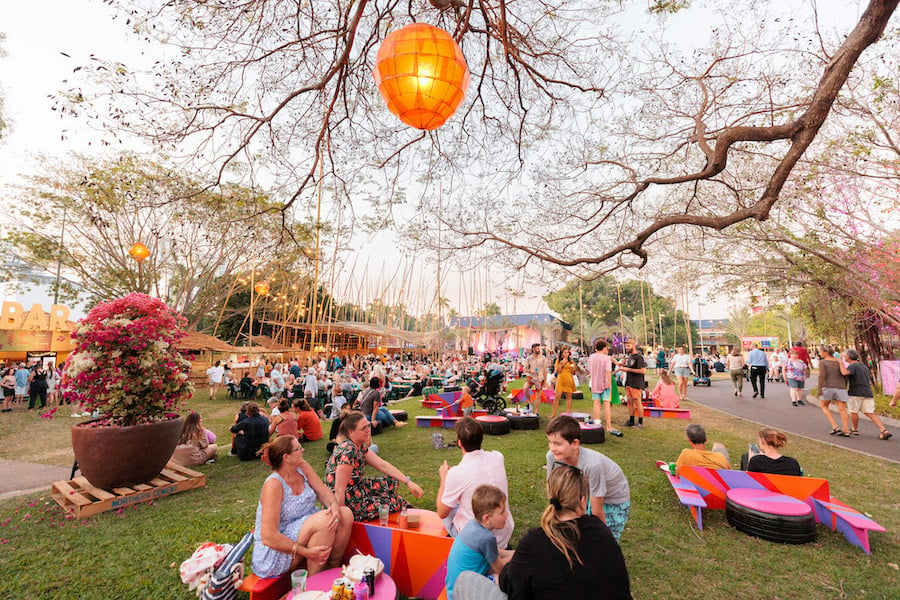
Festival Park at Darwin Festival. Photo by Rachel Rachel. Supplied.
Each night about five thousand punters flock to Festival Park, on Larrakia Country, to sit under the stars and enjoy music, mostly from First Nations artists and groups, and fill their stomachs with food from one of the half dozen stalls by local restauranters (the wood-fired pizzas are hard to beat). The culturally vibrant family-friendly atmosphere makes Darwin Festival unlike any other.
More than twenty hot days and balmy nights are programmed to the brim every year (there are more than 150 performances and eighty events spread across twenty venues) with theatre, art, music, comedy and more – plus major attractions like the National Indigenous Music Awards (NIMAs), the unmissable Darwin Aboriginal Art Fair (DAAF), and the longest running and most prestigious Aboriginal and Torres Strait Islander art award, NATSIAA.
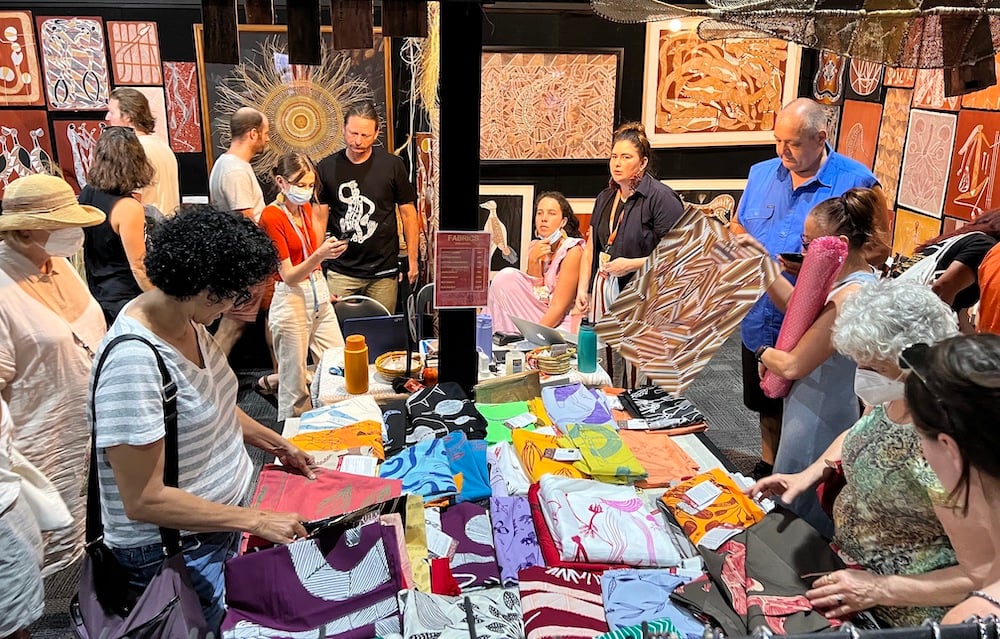
Darwin Aboriginal Art Fair. Photo by Jake Challenor. Supplied.
DAAF, a destination for art enthusiasts and collectors – made up of almost 80 art centres – is held annually at the Darwin Convention Centre. Australians spend millions of dollars at DAAF each year, supporting remote communities while ethically taking home everything from ceramics to paintings by more than two thousand contemporary artists who get to keep 100% of the proceeds.
Rebekah Raymond, curator of Aboriginal art and material culture at The Museum and Art Gallery of the Northern Territory, which hosts the Telstra NATSIAA, describes Darwin’s bustling arts scene as “vibrant”.
“We’re very lucky that not only throughout the year but during this time of year, there is an amazing amount of fantastic art on display by local Larrakia artists and artists from other areas,” Raymond told Rolling Stone. “This August period is the time where so many mobs get together. People from communities from all over this continent get together, share art, it’s about celebration, and showing the diversity and vibrancy of Aboriginal and Torres Strait Islander art.”
Love Music?
Get your daily dose of everything happening in Australian/New Zealand music and globally.

This year’s NATSIAA collection on display at MAGNT. Supplied.
The Telstra NATSIAA, which has been running for thirty-nine years, is now the richest art awards program in the country with an impressive prize pool of $190,000 split between seven categories. Many of the pieces, all on display at the gallery, are ethically acquired by collectors and corporates.
Raymond said buying direct is about respecting artists.
“I think the most important thing you can do is to ensure that you’re buying ethically. It’s about respecting the artists and understanding that all artists deserve to be paid fairly,” she said, referring to the “long” campaign to petition policymakers for cultural intellectual property legislation.
“There’s been a long, long campaign about how policies, procedures and laws need to be put in place to ensure that Aboriginal and Torres Strait Islander artists continue to be paid fairly, that their work is respected and that it’s not ripped off in any way, or misused,” Raymond added.
Yolnu artist Margaret Rarru Garrawurra won this year’s Telstra Art Award.
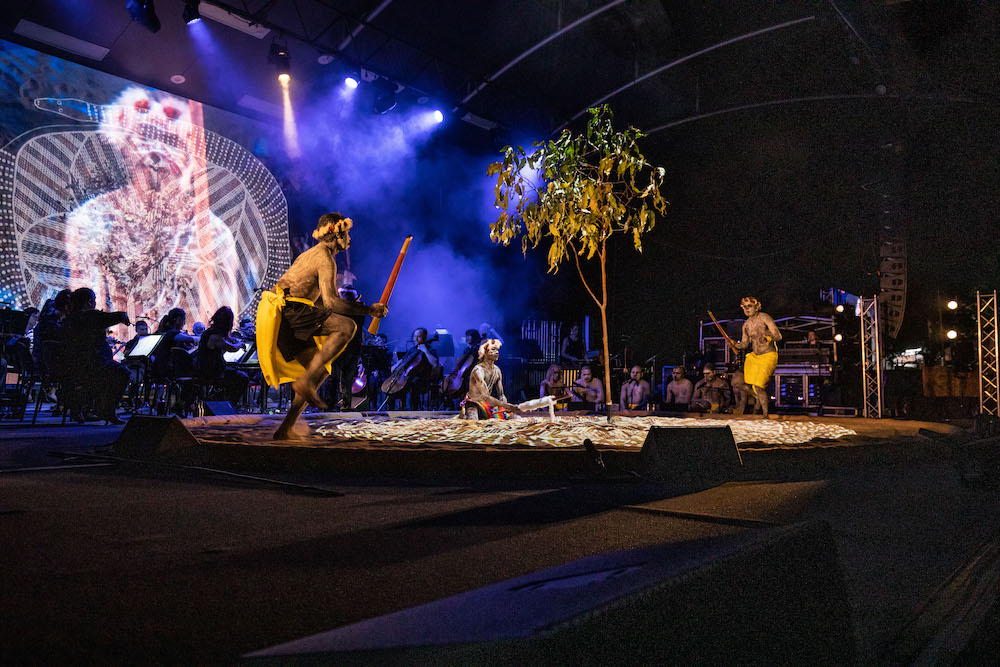
Bungul at Darwin Festival 2022. Photo by Helen Orr. Supplied.
After doors swung open on Thursday, it was Darwin Festival’s ceremonious start that set the tone with a five-star opener that will long be remembered by those lucky enough to be seated in Darwin’s outdoor amphitheatre to witness one of the best opening nights in Australian festival history.
Bungul – every bit magical, masterful and spiritual – was a breathtaking and immersive ninety-minute celebration of Yolŋu singer Gurrumul’s posthumous final album, Djarimirri (‘Child of the Rainbow’).
Backed by the Darwin Symphony Orchestra and Yolŋu dancers and musicians, Bungul delighted more than 4,500 festival goers. It was also one of the most expensive, prolonged and most ambitious productions ever undertaken by organisers. Outgoing artistic director, Felix Preval, revealed that Bungul was “the largest-ever work Darwin Festival has commissioned.”
A spectacular mix of traditional dance, music and videography all beautifully intertwined with Gurrumul’s signature vocals, Bungul was jointly commissioned with Sydney Festival, Perth Festival, Adelaide Festival, Brisbane Festival and Rising through a Major Festivals initiative. Although it was scheduled to debut in Darwin three years ago, production delays and the pandemic meant it would be 2022 before Bungul, finally, reach the NT.
“Almost four years in the making,” Preval reminded the crowd.
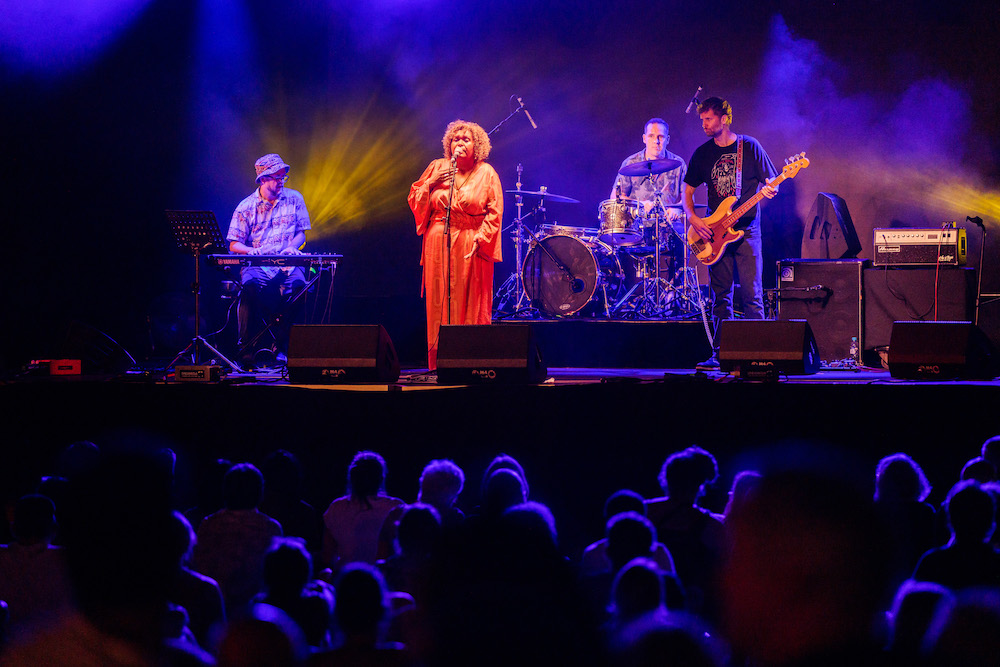
Emma Donovan at Darwin Festival on August 5, 2022. Supplied.
Live music is a staple of Darwin Festival.
Evening performances from Tropical Fuckstorm, King Stingray, Arlo Parks, and Emma Donovan & The Putbacks soundtracked the first four days of world-class music for thousands of sun-seekers cooling down from thirty-degree days.
During Donovan’s soulful set on Friday, a few hours after sunset, the Gumbaynggirr woman dedicated a song to Gunditjmara-Bundjalung songman Archie Roach, who passed away one week earlier, resulting in an impassioned rendition of Simon and Garfunkel’s 1970 hit “Bridge Over Troubled Water”.
The friendship between Donovan and Roach was evident.
“Sometimes you don’t need to talk,” a visibly emotional Donovan told a packed crowd from the Sunset Stage at Festival Park, before launching into song. The following night she also led a moving tribute for Roach at the NIMAs; a late addition by organisers to the yearly awards show lineup to recognise the important life and legacy of the beloved Aboriginal musician.
“It’s only right that when we have these beautiful nights like this, and we come together as musicians, that we pay our tribute and respect,” Donovan said, as she invited other NIMAs performers on stage – including Fred Leone and Yolngu vocalist Yirrmal – to jointly perform Roach’s “We Won’t Cry” in front of more than three thousand in attendance. “Blackfellas, whitefellas, he’s made an impact on this whole country. We know him as Uncle, Uncle Archie Roach.”
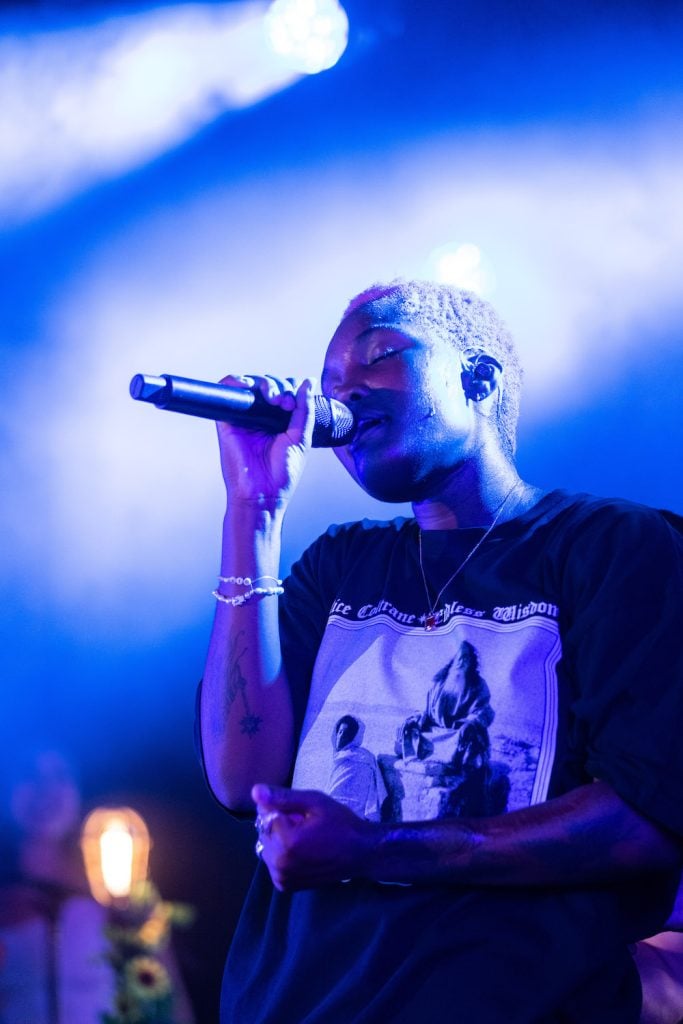
Arlo Parks performing at Darwin Festival. Photo by Helen Orr. Supplied.
Parks, who is touring Australia for the first time, pulled the Sunset Stage’s biggest crowd for her set on Sunday. Despite the “million flights” it took to reach Darwin, the 21-year-old British singer and poet wowed. She opened with two of her critically acclaimed singles, “Cola” and “Caroline”.
There are plenty more big names yet to hit the festival’s stages this year.
Satirist, provocateur and musical genius Tim Minchin will make his Darwin debut on August 13 at Darwin Amphitheatre. Alex the Astronaut will perform songs from her new album, How to Grow a Sunflower Underwater, at Festival Park’s Sunset Stage this Saturday. And on Friday, Taiwanese-Australian artist and creative maverick Jaguar Jonze will also play Sunset Stage.
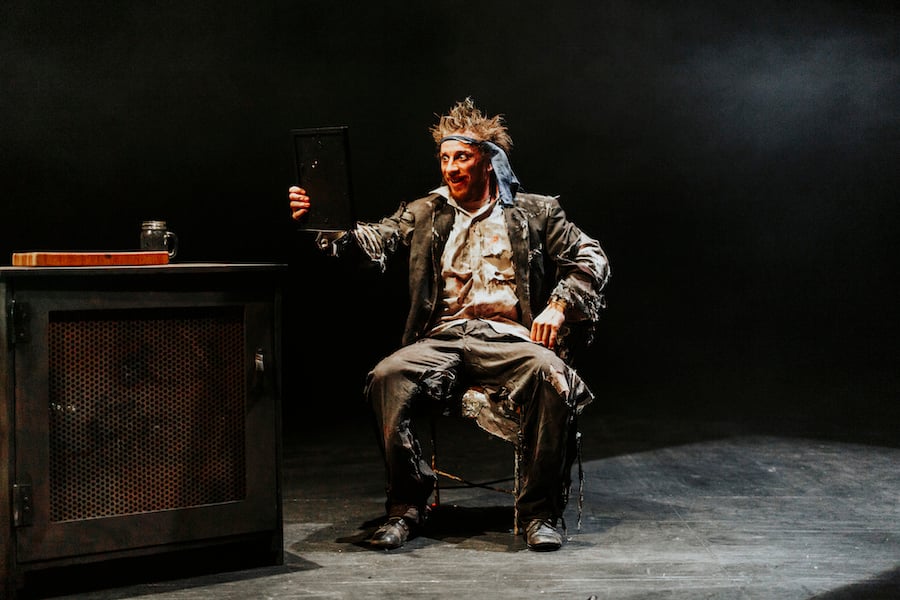
Mitch Jones’ AutoCannibal at Darwin Festival. Supplied.
Between the art and tunes, there is something for everyone.
The Weird: He’s out of food, out of water and slowly going out of his mind. Provocateur Mitch Jones tackles the looming climate apocalypse, or more accurately life after the end of the world as we know it. From brass-necked bodily brews to making love to a garbage bag, Jones playing ex-TV newsreader Captain Ruin in AutoCannibal will leave you laughing or crying.
The Wacky: Climate apocalypse was also a subject of comedian Vidya Rajan’s hilarious, clever and conceptual one-woman show that will leave your cheeks blistering from laughter. Like only Rajan can, topics like reincarnation as a worm, middle-aged men discovering QAnon, and finding a husband to please her mother are unpacked with utter hilarity and honest absurdity.
The Wonderful: Escape from the festival to Parap Markets. Just five kilometres from the city, the Saturday morning market has become an institution and a ritual among locals. But it’s not just the arts, crafts and local galleries that draw big crowds. The main attraction is Mary’s Laksa. While not everyone’s first choice for breakfast, it’s guaranteed to please your palette.
Darwin Festival runs until August 21.
Rolling Stone AU/NZ print editor Jake Challenor visited Darwin Festival courtesy of organisers, with support from Tourism Australia through the Regional Arts Tourism Package.



































